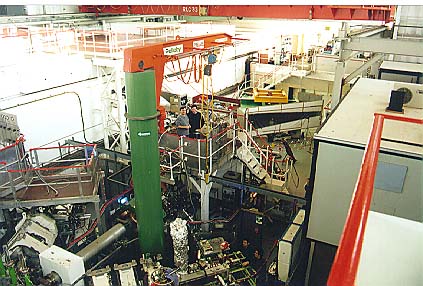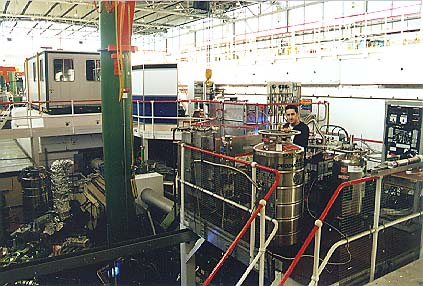In order to have muon beam we travel to either ISIS or PSI where we perform longitudinal and transverse field mSR experiments. The data collected in these experiment are imported into Origin for analysis.
The experiment’s data are imported into Origin worksheets and brought home for analysis. We have developed specialized macros under Origin, which are compiled as dll’s, for Musr data analysis.
Programer: Galina Bazalitsky
ISIS
ISIS is ideal for systems where the muon has a long T1 or a narrow line width since data can be accumulated for 20 msec. The payoff is the low time resolution, which is worse than 0.1 msec. In ISIS we have access to longitudinal field of up to 4kG and a temperature range between 50mK and 1000K. The transverse field is limited to 600G and similar temperatures as in the longitudinal case.


PSI
PSI is ideal for systems in which the muon has a short T1 or broad line width since the time resolution is better than 0.01 msec. However, data can be accumulated only for 10 msec. In PSI we have access to both longitudinal and transverse field up to 5T and temperature range between 50mK and 1000K.
mSR Publications:
- A. Keren, Muons as probes of dynamical spin fluctuations: some new aspects, J. Phys.: Condens.Matter 16, 1-16 (2004).
Abstract:
This paper describes the impact of dynamic spin fluctuations on the muon spin relaxation signal in the longitudinal field set-up, namely, when a field is applied along the initialmuon spin direction. Ourmain objective is to showthat theµSR technique can do more than determine the correlation time of the spins in the systemunder investigation. It can, in fact, determine if the concept of correlation time is valid to begin with, and if not suggest alternatives. Consequently, the paper shows what to expect from the muon signal over a range of situations starting from a simple antiferromagnetic hopping model to more complicated models involving power laws and other types of correlation functions. The application of all models to experimental data is demonstrated. The possibility that the muon, by itself, generates dynamic fluctuations is critically examined by comparing muon and neutron scattering data.
- A. Keren, Generalization of the Abragam Relaxation Function to a Longitudinal Field, Phys. Rev. B 50, 10039-10042 (1994).
Abstract:
TWe obtain an analytical form for the muon relaxation function in a dynamical magnetic environment and an external longitudinal magnetic field using perturbation theory. The new relaxation function is compared with the semi-classical Kubo-Toyabe function and the result of Monte Carlo simulation. We also demonstrate the application of our result to the case of dilute spin glasses.
- A. Keren, Dynamic Spin Relaxation Processes of m+ in an Antiferromagnet, Hyp. Int. 85, 281-286 (1994).
Abstract:
A new mechanism for positive muon spin-lattice relaxation (SLR) in an antiferromagnet is described. The temperature dependence of the relaxation rate (1/T1) is calculated in a simplified case, and SLR of muon in MnF2 is studied in the context of this model.
- A. Keren, L. P. Le, G. L. Luke, W. D. Wu, and Y. J. Uemura, Explaining m+ Spin-Lattice Relaxation in MnF2, below TN, By Scattering Function, Hyp. Int. 85, 363-368 (1994).
Abstract:
A relation between the spin-lattice relaxation rate (1/T1) of positive muons and the scattering function ST(q,w) is derived for the antiferromagnet MnF2. We find good agreement between previous mSR measurements of 1/T1 and our calculation using neutron scattering measurements of ST(q,w).